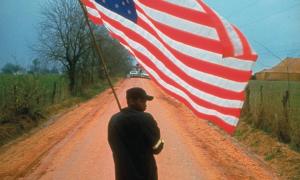author
960 Results
publication
A Quick Reference Guide to Teaching Hard History
[2022] LFJ's framework for teaching about American slavery can be used to supplement current curriculum or to guide the creation of new curriculum that more honestly and courageously tells the story of American slavery.
July 6, 2022
article
BROWN V. BOARD: A New Milestone Decade

Can Brown's anniversary reawaken the spirit of common cause that fueled the Civil Rights Movement?
article
Commemorate 9/11 by Confronting Islamophobia
Last week, Teaching Tolerance ran a post from an assistant principal in Illinois. Lamenting the recent spate of anti-Islamic incidents and the rising anti-Muslim rhetoric, she wrote:I immediately wondered how to tackle this head-on as an educator. What would I say to my teachers about how to approach the subject in our history classes? How could I be a participant in a difficult conversation in which some of our Muslim students are directly affected?
article
Size Bias Does Not Justify Bullying
A war on obesity is raging. Everyone from Jillian Michaels to Michelle Obama is calling for all Americans to lose the fat. But as doctors spend millions of dollars on fat-shaming billboards targeting children and studies proving that dieting simply doesn’t work, one might ask where does encouragement end and bullying begin?
text
Informational
Witch Hunting
In this essay, the author draws parallels between the "witch hunts" experienced in 1692 in Salem, Massachusetts and in 1950 in the U.S. government at U.S. Senator Joseph McCarthy's urgings.
June 20, 2016
text
Informational
Covering
To cover is to downplay aspects of our identity that make us different from mainstream society. Kenji Yoshino argues that, although we live in an age where the law prohibits many forms of discrimination, people still face pressure to hide who they are.
July 2, 2014
article
Hesitation and Hope
The 2008 election showed us that true progress in the struggle for equality is possible. Yet there is still much work to be done.
article
Why Does the Buddha Have Long Ears?
A North Carolina museum educator invites students to explore religious diversity through art.
text
Informational
Freedom's Main Line
One of the earliest assaults on segregated transit in the South occurred in Louisville, Ky., in 1870-71. There, the city’s black community organized a successful protest that relied on nonviolent direct action, a tactic that would give shape to the modern civil rights movement nearly a century later.
December 6, 2017